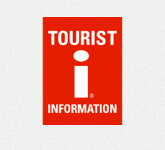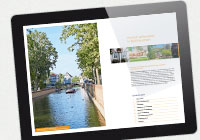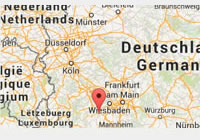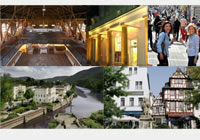
200 years of spa heritage - past and present
Even the Celts and Romans appreciated the benefits the Nahe Valley had to offer: a mild climate, favourable conditions for settlement, and also the healing powers of the surrounding natural environment. It is the latter that gives Bad Kreuznach its distinctive look today.
A natural treasure – the medicinal springs of Salinental valley
In the Nahe Valley between Bad Münster am Stein-Ebernburg and Bad Kreuznach, saline springs emerge in numerous places. For a long time, they were used for salt extraction, which began in both towns from 1720 to 1730. During this time the graduation walls appeared with which table salt was produced. Salt was a precious commodity and also known as “white gold”. Bad Kreuznach’s Salinental valley and the remaining graduation walls in the Kurpark gardens of Bad Münster am Stein are still monuments to salt extraction today. In 1817, Dr Erhard Prieger introduced brine drinking and spa treatments after rediscovering the health-enhancing properties of brine springs. Bad Kreuznach quickly became an international spa and health resort. The first Kurhaus (spa hotel) opened in 1843, marking the beginning of a steady rise in resort therapy and spa culture in Bad Kreuznach. The island formed by the Nahe river and the Mühlenteich millpond saw the rise of an entirely new town quarter called the Badewörth (bathing island). In the 19th century, scholars, aristocrats and wealthy citizens from all over Europe – primarily from England and Russia – promenaded here. Bad Münster also used the springs for treatments and became popular as a family health resort around the same time. Around 1850, English spa guests restored Bad Kreuznach’s Pauluskirche church at their own expense. It was the only church in the Rhineland where services were held according to Anglican rites. Both health resorts flourished until the First World War. Bad Münster am Stein was awarded the designation of Bad (spa) as early as 1905. Bad Kreuznach did not receive it until 1924.

Radon therapy and times of war
The use of a radioactive element for medicinal purposes gave the two spa resorts a fresh boost. Kreuznach was one of the world’s first spa resorts to use radioactive radiation in therapies.
In 1904, the Kreuznach pharmacist Dr Karl Aschoff discovered the radon content of the salt springs and developed radon therapy. Initially, patients bathed in radon water from the springs of both spa resorts. Then in 1912, the Heilstollen (healing tunnel) was opened. It is still in operation today. In Bad Münster, the radon content of the water was harnessed and later enriched for inhalations.
It was during these decades that the magnificent buildings emerged which make today’s spa quarter worth visiting. Their existence is thanks to an international boom in Bad Kreuznach’s resort therapies brought about by the radon treatment.
The two world wars and the ensuing periods of occupation interrupted or destroyed spa operations, making it necessary to begin anew after the Second World War.
Resort therapy since 1955
After the devastation of the Second World War, preventive healthcare and social health cures (resort therapies prescribed by a doctor and financed fully or in part by the national social insurance system) were the mainstay of the recovery. Numerous clinics were built, countless guests received therapy and treatments as outpatients in Bad Münster am Stein-Ebernburg and Bad Kreuznach. Particularly people suffering from musculoskeletal disorders and rheumatic patients used the Kreuznach method combining brine and radon.
Both spa resorts experienced a steep decline in resort therapies from 1993 on due to cutbacks in services in the healthcare system. Since 1998, Bad Kreuznach has completely revamped the range of therapies offered. In 2014, Bad Münster am Stein became part of Bad Kreuznach.





